The new Nest Learning Thermostat (4th Gen) arrived in late August as a major upgrade to the previous “Learning” model, as well as the mid-range Nest Thermostat from 2020. The new model brings a striking new design, full compatibility with the Google Home app, ships with the newly launched Nest Temperature Sensor included in the box, and has more settings and smarts than I think most of us will know what to do with.
I’ve had the opportunity to test the new Nest Thermostat (4th Gen) for a solid couple of months now and have tried to take my time with it. This isn’t exactly the type of device you test battery life on for a couple of weeks, snap a bunch of pictures with, swipe around for performance and run apps on, and then push out a bunch of words to describe how the experience would be in others’ lives. This is a thermostat. It lives in your house, only it’s out of the way, doing things behind-the-scenes to keep you comfortable and not something you necessarily have to interact with often, assuming it’s doing its job properly.
So I’ve gone all this time, tweaking settings here and there, making sure the temperature sensor is a part of my system, twisting the satisfying frame of the device to occasionally adjust temperature, etc. I’ve let it create schedules that I’ve updated a time or two, looked at my energy dashboard just because, that sort of thing. I’ve used it, let’s just put it that way.
What’s it like to have lived with this $280 high-end smart thermostat for a full two months? Let’s talk about it in our Nest Thermostat (4th Gen) review.
What do I like about the Nest Thermostat (4th Gen)?
Setup is easy enough. Like other Nest Thermostat devices, this one should be a self-install thing for most people. While messing with your heating and cooling system can be stressful if you aren’t an HVAC professional, Google and Nest include both written and video instructions (with the Google Home app helping too) to help you get setup. For this new Nest Thermostat (4th Gen), that’s the case again and I was able to easily get this device up and running in no time on my own. I’ve also installed 3 or 4 of these over the years, but trust me, you can probably do this.
In the box, this Nest comes with the face plate in whichever color you choose (Polished Silver, Obsidian, or Gold – I went Polished Gold for this review unit), along with the new Nest Temperature Sensor (2nd Gen). You also get the base plate (where the wires attach), a metal plate for specific installation types, a trim plate (if that’s your style), and all of the screws needed. Again, it’s all there and I think most people can do this.
That said, I recently had to replace my 12-year old HVAC system (ahhh…home ownership) and my new system is a 2-stage system that my previous Nest Thermostat E did not support. So once I got this new Nest Thermostat (4th Gen) installed on my wall, I had to have a professional come out and adjust settings on my new system for this thermostat to properly interact with it. The previous Nest Thermostat (2020 model) and Nest Thermostat E only support 1-stage heating systems, but this new Nest Thermostat (4th Gen) supports up to 3 stages. I’d bet that’s a big part of the price you pay for this over other models.
Design is incredible. It’s not often that a piece of smart home tech can be a showpiece in a home or an object that can improve the design of a space, yet that’s exactly what I think this Nest Thermostat (4th Gen) does. Again, I went with the Polished Gold model for review purposes and it is so lovely on my wall.
This upgraded design with its massive domed crystal display (60% bigger than previous model) and small bezels really does look like a piece of fine jewelry on your wall, especially without the trim plate behind it. It’s this bulb of floating reflective glass that has this mysterious cloudiness or magical depth to it that will grab your attention as you pass it by. Previous Nest models all had this prominent edge or bezel that you interacted with, while this one almost has a hidden bezel that the domed glass blends into to give it this rounded look. It comes off as something you maybe shouldn’t touch, because it’s too pretty, but you do because it’s also fun to play with.
This device does have a rotating piece to it that allows you to jump through settings and change the temperature. You can push the device too, like if it were a giant button, to select items. It should be a familiar set of interactions if you have used previous Nest models, although this new version feels upgraded or more satisfying to use at times.
Digital clocks and Farsight. And then you have this new thing that Nest is calling Farsight. It’s a bit like a phone’s always on display that you can customize on some level. Unlike previous Nest models that only showed you current temperature as they sensed you nearby, this one can show you the time through a couple of clock faces, current weather outside, and more specific items like humidity levels, “feels like” temperatures, outdoor air quality, and the date.
Now, when you walk up to your thermostat, you get more information on a small screen that can inform you about the day. While your phone is probably handy with this info, a lot of what Google and Nest are showing here makes so much sense that once you use it you wonder where this feature has been all your life.
Included temperature sensor. The fact that Google is including their new Nest Temperature Sensor (2nd Gen) in the box is without a doubt one of my favorite things about the new model. Sure, you are likely paying for it with that $280 price tag, but I would have bought one anyway and now it just comes as a part of the experience out of the box.
With my previous Nest Thermostat units, I had connected them to the old Nest Temperature Sensor because I have a 2-story home and you can have the thermostat adjust temperatures based off the temperature at the sensor instead of the actual thermostat. Since I don’t have multi-level heating and cooling in my house, the temperature sensor allows me to at least sort of act like I do and have the thermostat take into account my upstairs temperatures to then cool or heat at a certain time of day depending on the year. It is one of my favorite smart home features of all time.
And it does more too. If you have hot or cool spots in your home, you could essentially bring the temperature sensor with you throughout a day and the thermostat should adjust temperatures accordingly to get that room where you want it, which is pretty cool. You can also tell all of your different schedules to utilize the sensor or your thermostat or both to maintain a comfortable level of heat or cool.
I would have told anyone with a Nest Thermostat to buy the new temperature sensor, yet with this new 4th Gen version you don’t have to.
Google Home app is pretty good. I’ve been using the quite-old Nest Thermostat E up until I made the switch to this new 4th Gen model because…I just liked it. But because I used that old model that was built originally to work with the old Nest app, it never felt quite like it was ever going to work properly with the Google Home app. I seriously hung on to the old Nest app for as long as I could and only recently gave in to Google Home.
For this Nest Thermostat (4th Gen), you only get to use the Google Home app and I quite like it for the most part. The setup was easy enough, but once you are setup and letting it do its smart learning thing, getting into its settings and adjusting anything is quite simple. Google presents everything in a bubbly, easy-to-touch layout with a big temperature wheel, along with shortcuts for heating/cooling modes, sensors, your fan settings, schedules, the energy dashboard, and tells you other info, like what the humidity in your house is.
Tapping on almost anything gets you more info or options. Looking at your schedules to see if the thermostat has created ones that work for you is as clean as can be. If you ever used the old Nest app schedule page, you’ll know immediately how big of an improvement this is. Man, I still have nightmares about adjusting schedules in the old app after it took a one-time adjustment in the middle of the night to mean I wanted a permanent schedule change. Yikes.
But if you want to adjust Farsight options, share the device with others in your home, adjust notifications for things like your air filter reminders, set temperature preferences and the various related settings there, or allow your phone to tell the thermostat if you are home or away, that’s all a settings click away at the top of the app.
I was hesitant to fully dive into the Google Home app, an app I don’t necessarily think is great, but so far things have gone well.
All of the modes and supposed smarts. If you have a device with the word “Learning” in the name, you hope it’s smarter than just any old smart thermostat. For this 4th Gen model, Google says it should be smarter because of AI and because it is better at learning your schedule, which all should then lead to a more efficient and eco-friendly energy usage from your home.
This is where reviewing a device like this becomes difficult in a short amount of time, because even after 2 months, I have no idea if this device is doing everything it supposedly can. That said, I like the ideas it’s pushing and can’t wait to further live with it and hopefully report back.
I’m talking about features like the Natural Heating and Cooling mode, where the Nest Thermostat (4th Gen) will use outside temperature info to potentially turn off your HVAC unit when that outside temp could naturally heat or cool your home. You can even set window reminders that notify you when it might be a good time to open your windows instead of running your system. This seems a lot like a summer-related feature, and of course, just as I began testing we started transitioning to fall here in the northwest.
This Nest Thermostat has adaptive modes too, that try to update temps to efficient levels when you leave or are on your way home. You can have it modulate the humidity in your home or help you understand in your dashboard why your daily use declined or climbed from one month to the next.
One other thing I would note with this new Nest Thermostat is that I feel like I’ve adjusted it less than other models I’ve had in my house. It does seem to get my preferences in temperature and maintains temperatures throughout a day that I find to be comfortable. As someone who has worked from home for the past 15 years, this is an important piece of the smart thermostat experience.
I know that I just got done saying that I need more time testing to see if the smarts here are truly smart, but after writing all of that out and explaining that I’ve touched this device less than my previous Nest, I guess maybe that’s a sign that it is improved? Right? So far so good.
What else should you know?
There isn’t really anything I dislike about this new Nest Thermostat (4th Gen). Sure, it is indeed expensive at $280, but if you are in the market for a smart thermostat, I think that price is probably justified because of this upgraded design, all of the smart features (that are included without subscription), and the included temperature sensor that I think everyone should have as a part of the Nest experience.
I did struggle for some time to figure out how to attach the sensor to specific schedules and some settings are buried in odd places, so the app does take some getting used to. Again, the Google Home app is not my favorite. Once you dive in a bit, I think you’ll be able to find what you need, plus Google constantly links to their Nest support pages to help you find more info about settings or features you encounter.
Setup was mostly simple and compatibility with my house wasn’t an issue, but that should be expected since I happen to have a brand new HVAC system at the moment. And because of that, I haven’t had any issues at all with this new Nest. It can handle my 2-stage system, it hasn’t told me about any problems with my hardware (which Google says it can detect), and the device itself just works flawlessly when you interact with it. Google did have to issue a software update shortly after launch to allow for brighter screens and manual brightness adjustment, so at least understand that Google can continue to improve this over time and has shown interest in doing so out of the gate.
You may be wondering if you should upgrade from an older model. That’s not an easy question to answer, because even older devices like the Nest Thermostat E I had still work just fine. These aren’t the types of devices we constantly use throughout a day and so they don’t exactly wear down. A smart thermostat isn’t typically a device you would upgrade regularly. If they work, they work, and you could hang-on to one for years without ever changing one out. For me, switching to this new 4th Gen model was going to be necessary because of an HVAC system upgrade. For you, you would really need to want the extra smart features or just to have a device on the wall that’s this beautiful. Or maybe you feel like it’s time because you were using a really old model like I was and you want to be set for the future. That was probably going to be my other reason to jump towards upgrading.
Here’s just a bit of a note I found funny when I had an HVAC tech over to adjust some stuff in my system. He saw a “For Sale” sign near my house for my neighbor, but asked if it was me who was selling. When I said “No,” he was a bit surprised and brought up the Nest install in his response. As it turns out, his industry gets a lot of calls to come out and install Nest Thermostat devices for people who are selling houses because a Nest at least gives the appearance of the house being newer and having a newer HVAC system even if it isn’t. Something to think about the next time you go home shopping.
Overall, this new Nest Thermostat (4th Gen) is familiar to someone like me, who has had a Nest on the wall for at least a decade or longer. It wakes when you approach it, lets you twist to set temperatures, has a companion app for controls from the couch (or anywhere), and is at least attempting to be more efficient at all times. When I reviewed my first Nest Thermostat back in 2013, I called it “my favorite Android accessory.” In 2024, I think the device has changed for me some and is now a device I can’t live without.
Should you buy the Nest Learning Thermostat (4th Gen)?
In the world of smart thermostats, there are a number of players. Honeywell is probably king with their various models and designs, but companies like Ecobee and Amazon are still a part of the space. Google’s Nest brand has long been a pioneer in the smart thermostat arena and has always produced what I would consider to be quality models that lean into being smarter than the rest, while having a unique design that can stand out on a wall.
For this Nest Thermostat (4th Gen), there is so much good going on. This is the best design of a smart thermostat you’ll find and it’s not particularly close. The elegance of this unit on your wall is something else – what a beautiful piece of hardware. But it isn’t just about looks here. The new Nest Thermostat is simple to setup and use, yet has smarts to improve your home’s efficiency, easy controls over your schedule, might tell you if you system is having issues, and the Google Home app has gotten to a place where it’s usable, at least with this thermostat.
$280 is a lot to swallow for a device that’s just going to sit on your wall and that you might rarely interact with, but it does come with a temperature sensor that I think almost everyone will get use from and, well, it is a stunner.
Shop Nest Thermostat (4th Gen) Deals: Amazon | Best Buy | Google

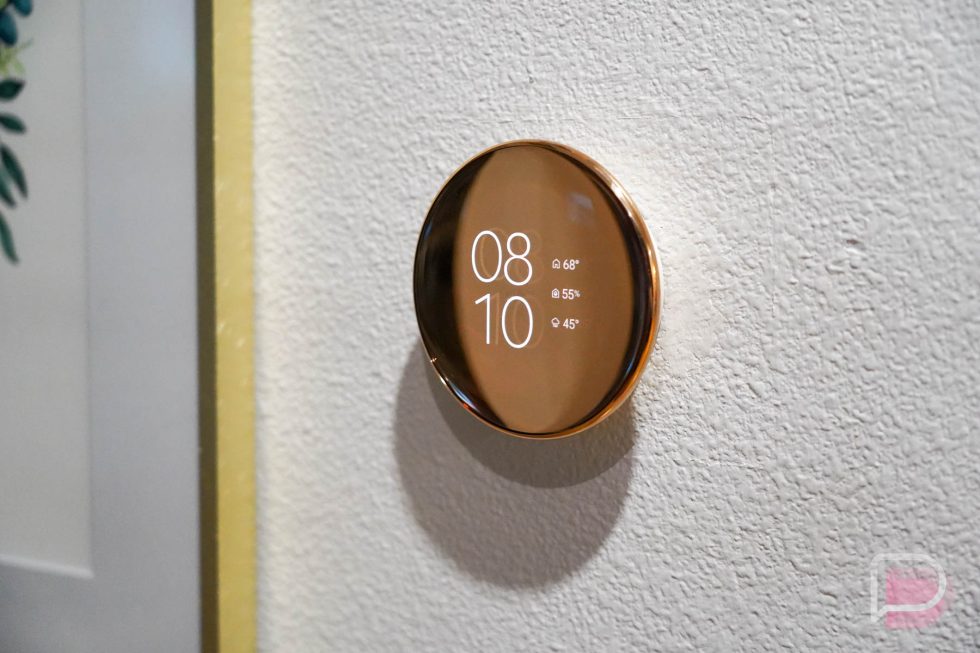
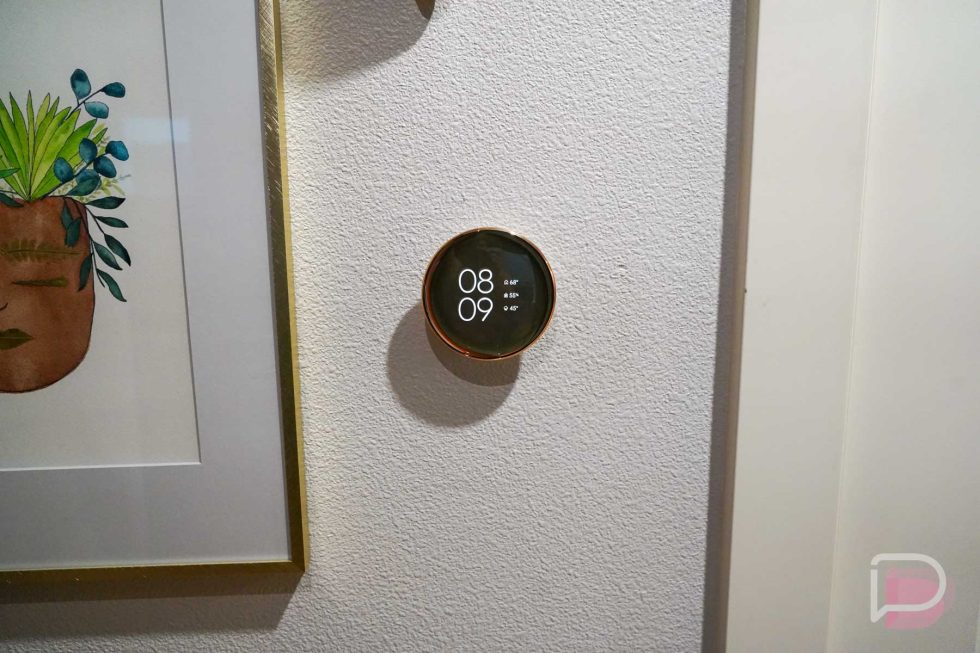
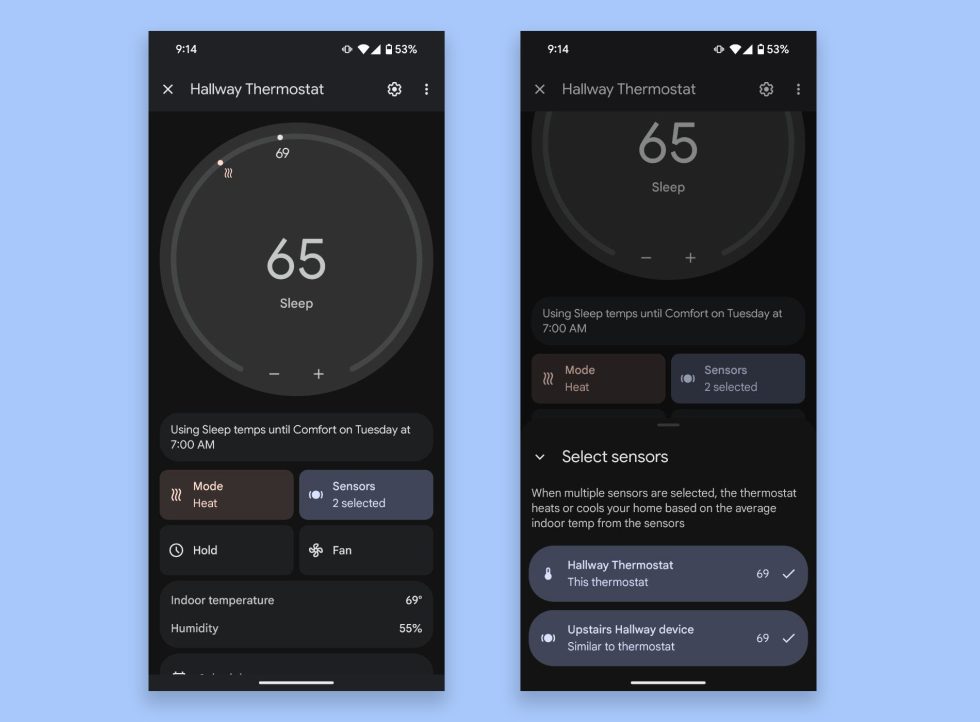
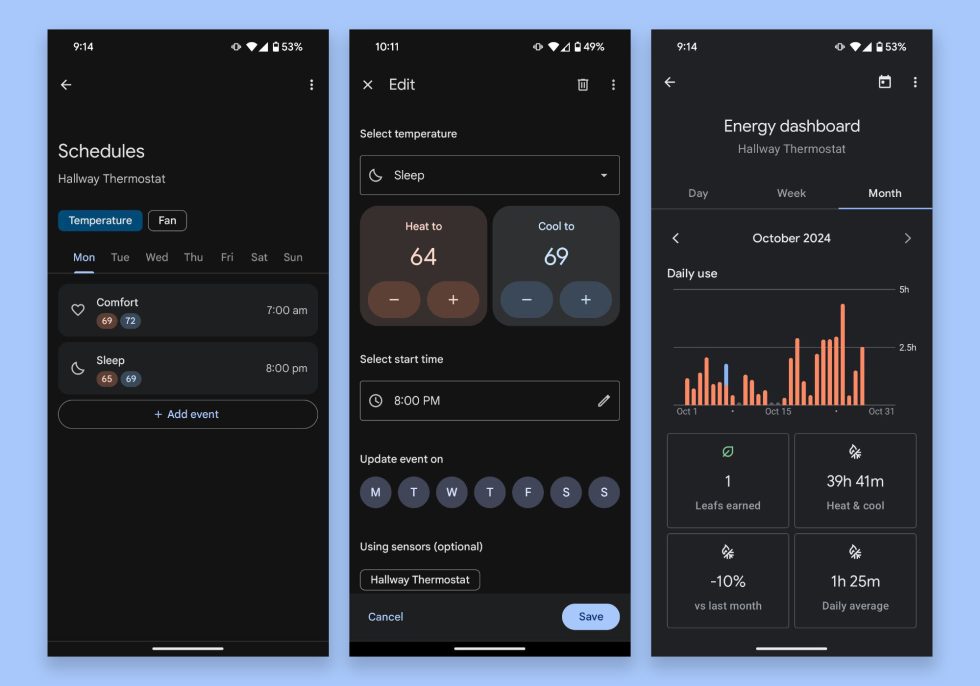
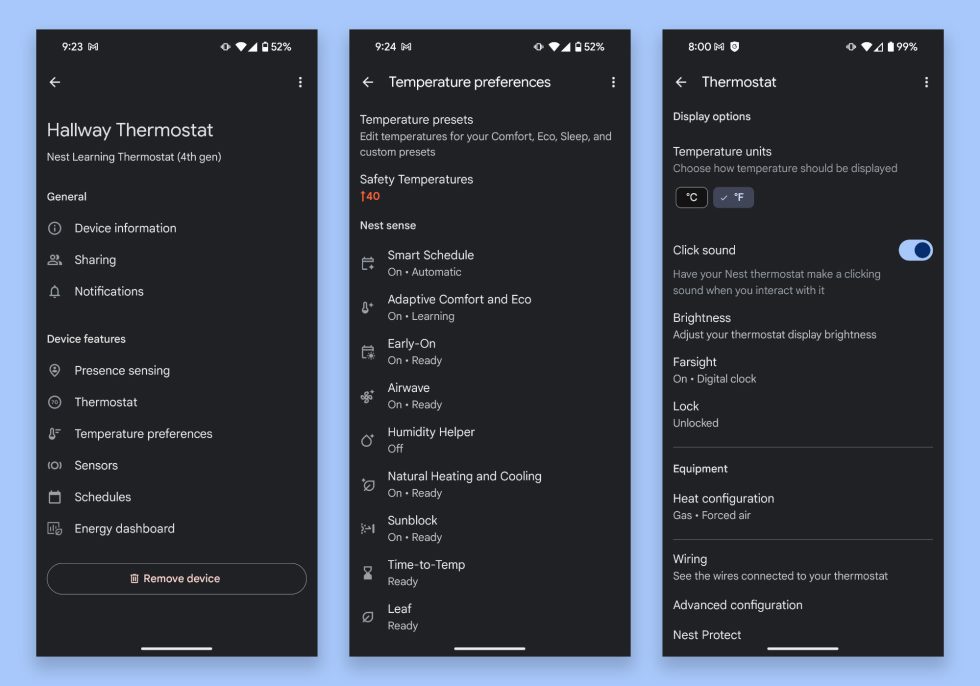
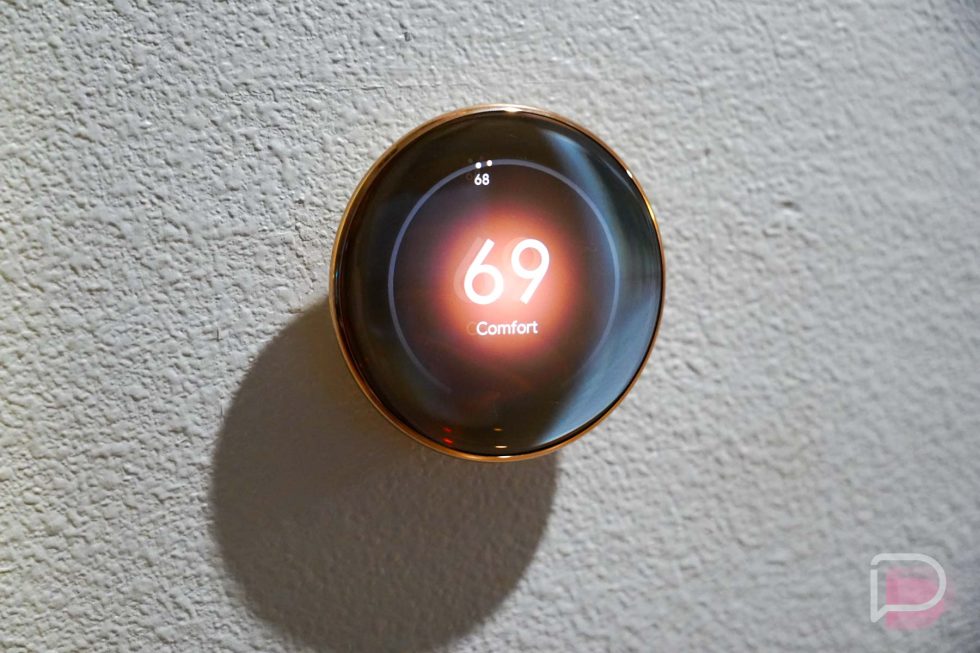
Collapse Show Comments7 Comments